Sistrum: A Magical, Sacred Ancient Egyptian Musical Object
A. Sutherland - AncientPages.com - The ancient Egyptian object known as the sistrum is often associated with Hathor, a goddess who personified the principles of joy, feminine love, and motherhood.
She was known as "the Great One of Many Names," and her titles and attributes are so numerous that she was important in every area of the life and death of the ancient Egyptians.
Left: Head of Goddess Hathor, who is associated with the sistrum. Credit: Metropolitan Museum of Art - Public Domain- Right: Nefertari, wife of Ramesses II, holding a sistrum. Credit: Laban66 - Public Domain
She was a sky goddess, known as "Lady of Stars" and "Sovereign of Stars" and linked to Sirius (and so the goddesses Sopdet and Isis). Her birthday was celebrated on the day that Sirius first rose in the sky. During the Ptolemaic period, she was known to the Greeks as the goddess of Hethara, the third month of the Egyptian calendar.
The sistrum (rattle) used by Hathor and ancient Egyptians was a musical percussion instrument. It was also used in ancient Greek musical practices and often depicted in visual arts such as sculpture and pottery.
The object was made from clay, wood, or metal. The instrument provided rhythmical accompaniment to other instruments, particularly in religious rites and festivals.
Its name is derived from the Greek, 'seiein', meaning "to shake."
The sound of the sistrum is metallic, produced by many metal disks or squares, strung onto a set of transverse bars, set horizontally into a frame of varying design. Its sound was thought to echo that of a stem of papyrus being shaken. However, the acoustic effects were frequently extremely limited. Nevertheless, the sistrum was suitable for beating a rhythmical accompaniment in open-air processions.
Apuleius, the Roman philosopher, described a procession in honor of Isis in The Golden Ass, where the rhythmic pattern was three beats followed by a pause on the fourth.
The instrument's sound seems to have been regarded as protective and symbolic of divine blessing and the concept of rebirth. In addition to the symbolic significance of its sound, the shape and decoration of the sistrum relate it to the divine.
Left: Collection of sistrums at the Louvre. Credit: Rama - CC BY-SA 2.0 fr - Right: Romanized Isis holding a sistrum, also from the time of Hadrian. Credit: Marie-Lan Nguyen - Public Domain
Two forms of this ceremonial instrument may be distinguished, the oldest of which is probably the naos sistrum (ancient Egyptian).
While Hathor's head was often depicted on the handles of sistrum, an early travertine sistrum inscribed with the name of the 6th Dynasty ruler, Teti, takes the form of a papyrus topped by a naos, which is itself surmounted by a falcon and cobra, thus forming a rebus of the name Hathor (i.e., hwt Hor).
Thus, the sistrum known as the naos sistrum dates back to at least the Old Kingdom. It was usually surmounted by twin heads of Hathor upon which a small shrine or naos-shaped box was set. A vulture may crown the naos, and the handle may be covered with the incised plumage of the bird. Rods were passed through the sides of this naos to form the rattle.
Carved or affixed spirals framing the sides of the naos represented the horns of the cow-eared goddess. Note that this earliest form of sistrum was often made of faience.
Most surviving sistrum instruments usually date to the Greco-Roman Period, when the second type of sistrum was common. It is referred to as a hooped (or arched) sistrum, known in ancient Egypt as shm or ib. It is known from the 18th Dynasty onward, though it seems to be based on earlier prototypes for which we have the hieroglyphic designation but no depictions.
There are surviving examples of sistrums in bronze, mostly found in a burial context. An interesting example dates from the second half of the 2nd century BCE, found in Attica. This sistrum has four bronze horizontal bars of decreasing length, which slide in and out of the hoop. On the top of the hoop is a modeled dog, there is a modeled bull's head at the base of the handle. The handle itself is carved to represent a cluster of six auloi in order to resemble a column that is topped by a carved capital, joining the handle to the hoop.
In Greek art, dancers in processions are occasionally depicted holding a sistrum. A celebrated example is the Harvester Vase from Hagia Triada on Minoan Crete (1500-1450 BCE) which depicts a sistrum player in a harvest festival procession.
It is believed that this sacred ancient Egyptian instrument originated in the worship of Bastet. It was used in dances and religious ceremonies, particularly in the worship of the goddess Hathor, with the U-shape of the sistrum's handle and frame seen as resembling the face and horns of the cow goddess.
It was also shaken to avert the flooding of the Nile and to frighten away Set. In her role as mother and creator, Isis was depicted holding a pail symbolizing the flooding of the Nile in one hand and a sistrum in the other. Likewise, the goddess Bast is often depicted holding a sistrum, symbolizing her role as a goddess of dance, joy, and festivity.
Written by – A. Sutherland AncientPages.com Staff Writer
Updated on June 27, 2021
Copyright © AncientPages.com All rights reserved. This material may not be published, broadcast, rewritten or redistributed in whole or part without the express written permission of AncientPages.com
More From Ancient Pages
-
 Hasankeyf – 12,000-Year-Old Mesopotamian City Will Be Destroyed – Decision Sparks Outrage And Controversy
Archaeology | Aug 28, 2019
Hasankeyf – 12,000-Year-Old Mesopotamian City Will Be Destroyed – Decision Sparks Outrage And Controversy
Archaeology | Aug 28, 2019 -
 Advent: Facts And History About The Christian Season Celebration
Christmas Traditions | Dec 1, 2024
Advent: Facts And History About The Christian Season Celebration
Christmas Traditions | Dec 1, 2024 -
 Nevsehir Labyrinth Of Tunnels: Largest And Most Complex Underground City In The World
Civilizations | Apr 7, 2015
Nevsehir Labyrinth Of Tunnels: Largest And Most Complex Underground City In The World
Civilizations | Apr 7, 2015 -
 History Of Bread: Basic Food Of Man In Ancient And Contemporary Cultures Around The World
Ancient Traditions And Customs | Jun 18, 2023
History Of Bread: Basic Food Of Man In Ancient And Contemporary Cultures Around The World
Ancient Traditions And Customs | Jun 18, 2023 -
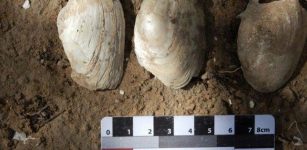 Aboriginals Inhabited South Australia 29,000 Years Ago – New Study
Archaeology | Jul 15, 2020
Aboriginals Inhabited South Australia 29,000 Years Ago – New Study
Archaeology | Jul 15, 2020 -
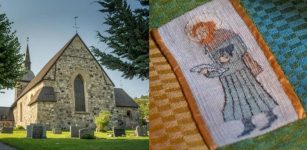 Saint Botvid – Viking Who Was Killed By A Slave He Granted Freedom
Featured Stories | Apr 10, 2023
Saint Botvid – Viking Who Was Killed By A Slave He Granted Freedom
Featured Stories | Apr 10, 2023 -
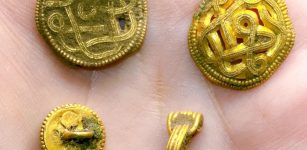 Spectacular Ancient Gold Treasure Found In Denmark – Was It A Gift To Please Angry Gods?
Archaeology | Sep 24, 2018
Spectacular Ancient Gold Treasure Found In Denmark – Was It A Gift To Please Angry Gods?
Archaeology | Sep 24, 2018 -
 Tomb Of Last Ruler Of A Sunken Kingdom Remains An Ancient Mystery
Ancient Mysteries | Mar 24, 2021
Tomb Of Last Ruler Of A Sunken Kingdom Remains An Ancient Mystery
Ancient Mysteries | Mar 24, 2021 -
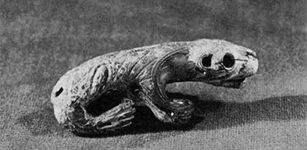 Ancient City Of Ipiutak Was Built By A Fair-Haired Race With Blue Eyes And Not Us – The Inuit Say
Featured Stories | Apr 23, 2019
Ancient City Of Ipiutak Was Built By A Fair-Haired Race With Blue Eyes And Not Us – The Inuit Say
Featured Stories | Apr 23, 2019 -
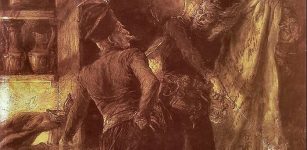 Pan Twardowski – The Man Who Sold His Soul To The Devil In Exchange For Special Powers
Featured Stories | Aug 12, 2021
Pan Twardowski – The Man Who Sold His Soul To The Devil In Exchange For Special Powers
Featured Stories | Aug 12, 2021 -
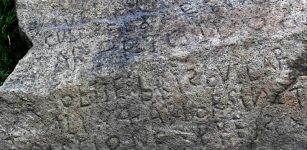 Mysterious Rock Inscription Found In Brittany Baffles Experts – Reward If You Can Decipher It
Archaeology | May 15, 2019
Mysterious Rock Inscription Found In Brittany Baffles Experts – Reward If You Can Decipher It
Archaeology | May 15, 2019 -
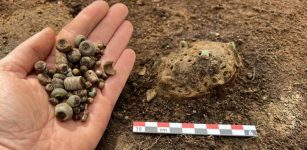 Amazing Artifacts Found In Viking Double Grave In Norwegian Garden
Archaeology | Jul 10, 2023
Amazing Artifacts Found In Viking Double Grave In Norwegian Garden
Archaeology | Jul 10, 2023 -
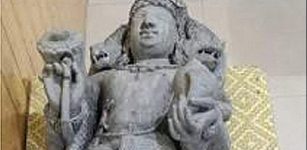 Sculpture Of Lord Vishnu Dated To The Early 9th Century Found In Kashmir
Archaeology | Aug 4, 2022
Sculpture Of Lord Vishnu Dated To The Early 9th Century Found In Kashmir
Archaeology | Aug 4, 2022 -
 Burnt Mound Complex Dated To Bronze Age – Uncovered At Suffolk Site
Archaeology | Jun 19, 2023
Burnt Mound Complex Dated To Bronze Age – Uncovered At Suffolk Site
Archaeology | Jun 19, 2023 -
 Monster Water God Gong Gong Blamed For Cosmic Catastrophes In Chinese Myths
Chinese Mythology | Nov 2, 2020
Monster Water God Gong Gong Blamed For Cosmic Catastrophes In Chinese Myths
Chinese Mythology | Nov 2, 2020 -
 Mystery Of The Ancient Unknown Mining Civilization In North America – Puzzling Archaeological Discoveries – Part 1
Ancient Mysteries | Apr 18, 2022
Mystery Of The Ancient Unknown Mining Civilization In North America – Puzzling Archaeological Discoveries – Part 1
Ancient Mysteries | Apr 18, 2022 -
 Pharos Of Alexandria – One Of The First Lighthouses In The Ancient World
Featured Stories | Sep 1, 2015
Pharos Of Alexandria – One Of The First Lighthouses In The Ancient World
Featured Stories | Sep 1, 2015 -
 Largest Collection Of Ancient “Cup-Marked” Rocks Ever Found In Scotland
Civilizations | Nov 23, 2018
Largest Collection Of Ancient “Cup-Marked” Rocks Ever Found In Scotland
Civilizations | Nov 23, 2018 -
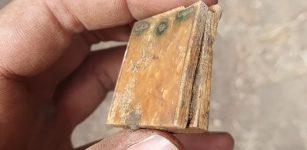 Extremely Rare And Tiny Medieval Sundial Discovered In Germany
Archaeology | Jul 31, 2023
Extremely Rare And Tiny Medieval Sundial Discovered In Germany
Archaeology | Jul 31, 2023 -
 Traditional Viking-Age Crafts: Glass Beadmakers And Their Secrets
Archaeology | Oct 4, 2022
Traditional Viking-Age Crafts: Glass Beadmakers And Their Secrets
Archaeology | Oct 4, 2022


